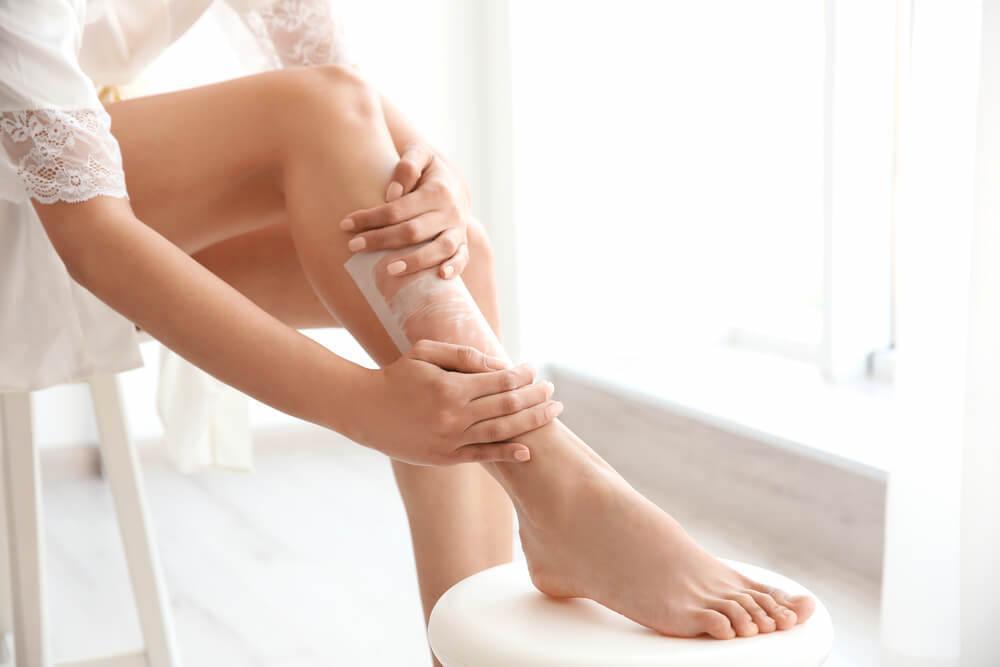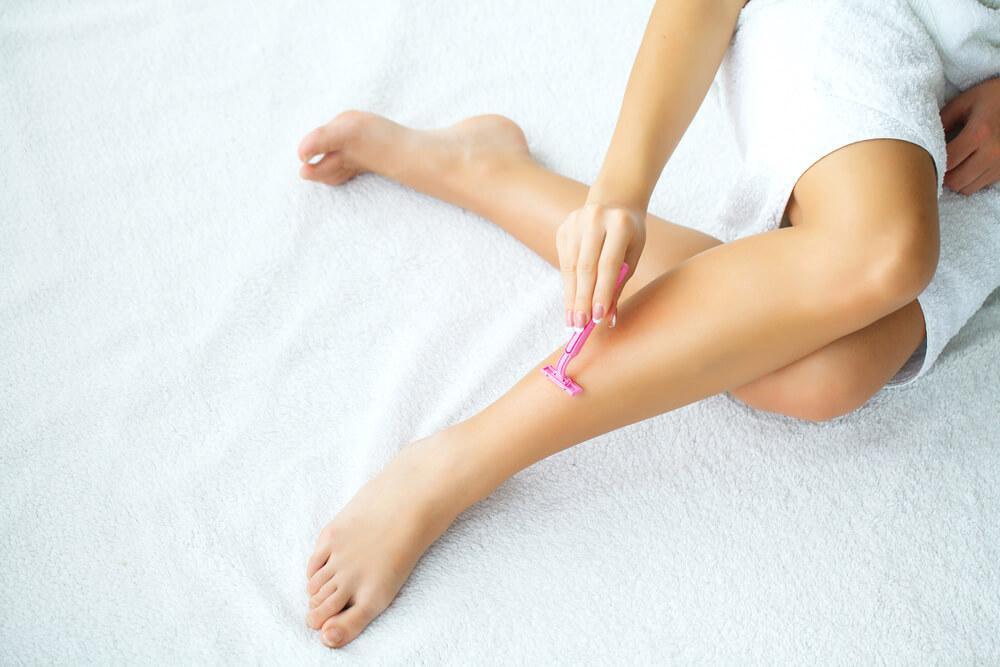With more women becoming conscious of the enormous societal pressures to always looked polished and free of flaws, it should come as no surprise that a number of cosmetic rituals that were once regarded as commonplace are now being seriously reconsidered.
In an effort to embrace our authentic bodies or simply to avoid the hassle of having to remove every single hair on our body, many women are ditching their tweezers and razors, rocking the au naturelle look.
However, perhaps the idea of letting your follicles go wild might not be something you’re (fully) comfortable with yet. And that’s totally OK!
At the end of the day, what we do with our bodies is our choice and our choice only, and whether you decide to present yourself with hairy or smooth skin is completely up to you.
And if you’re still having an internal debate on this issue, perhaps this simple guide on how to care for (both hairy and hairless) skin might help you tip the scales.
Ditch the Misconceptions
Regardless of whether you like your skin baby-smooth or stubbly, there are several huge myths that need to be dispelled about a woman’s natural body state.
First of all – you shouldn’t feel pressured to do anything because of gender expectations. As firmly embedded as notions of having hairless skin might feel, the trend of hair removal for women is, in fact, only a recent phenomenon: the first major popularization of hair removal in the West happened in 1940s due to shortage of nylon, which prompted women to sport bare legs more often. Wax strips were only introduced in the 1960s, while hair removal from intimate region only became common from ‘80s onwards.
Unfortunately, with the advent of digitally manipulated images, having skin free of hair (or any other kind of flaws) became the standard in media targeted at women, so it shouldn’t be a surprise that everyone suddenly felt pressured to chase the unattainable ideal.
With history of hair removal in mind, it might be easier to shake off the idea that a hairless body is the default mode for women. Despite what having hairy arms, legs, upper lip or armpits absolutely does not make you more masculine or less attractive.
Another major misconception is the erroneous relation between having a hairy body and lack of hygiene. There is absolutely no reason as to why hair skin should be considered dirty or unhygienic. After all, biology gave us all this hair for a reason: it’s role is to regulate body temperature and keep dirt and other sources of bacteria away from your skin. Therefore, you shouldn’t definitely shake off the idea that hair is anything remotely alien or unnatural – it belongs on your body just as much as any other part.
On the other hand, shaving, waxing and applying hair removal creams can all cause adverse reaction on the skin – so keeping it hairy might actually be the most sanitary option in some cases.
Decide What Feels Right for You
As we’ve already established, what you decide to do with your body should be entirely up to you.
If that means going wild and free with your follicles – go for it!
It might feel a little strange at first, but you will find it amazingly liberating after you’ve overcome that initial period of feeling awkward or a little too self-conscious.
If you ever start feeling insecure, just remember: the person who will notice this difference the most is you – other people probably won’t even register your hairy armpits or legs, and even if they do, they probably won’t care enough to comment.
On the other hand, if you’re attracted to the idea of going hairy, but are not yet ready to fully commit to the au naturelle look, maybe you can take baby steps.
For example, rocking hairy legs might feel like taking it a step too far, but perhaps ditching the tweezers for a month or two can seem feasible. Not only will this afford you an extra half an hour every week, sporting a pair of bushy brows will also be deliciously on trend.
On the other hand, perhaps the idea of having a hairy body makes your skin crawl. And hey, that’s also completely fine!
As long as you feel good and comfortable with your cosmetic choices (or lack thereof), that’s all that matters.
Choose Your Preferred Method of Hair Removal
OK, so you’ve decided that you’d rather rock smooth skin for the foreseeable future.
Still, it’s important to keep in mind that not all hair removal methods were created equal.
In fact, these days, there are all kinds of ways you can get rid of bodily hair, from the trusty traditional means to the more wacky ones.
Which one you choose will largely depend on your personal preferences, but also your skin type, as well as the area of the body which you are planning to rid of the hairs.
For example, if your skin is not particularly sensitive and you want long-lasting results, maybe waxing will be your best bet.
On the other hand, if you find this option to fussy and costly, perhaps grabbing a razor and shaving off your hair will be more suited for you.
When it comes to dealing with more delicate areas of our body, such as eyebrows or upper lip, you have a couple of more options available, such as tweezing or threading.
Finally, if you want to get rid of your hair once and for all, you might want to look into more permanent options, such as laser hair removal.
Shaving for a Quick and Easy Fix
The easiest and most accessible option for hair removal is, without any doubt, shaving. There isn’t much philosophy to it – all you need is a good razor and some shaving cream and you’re good to go.
And yet, there are both good and bad sides for opting for this particular method of hair removal.
While, yes, razors are cheap and quick – and work for larger areas of your body, e.g. arms and legs – the results are relatively short.
Depending on how quickly your hair grows back, you can expect solid stubble even after a day post-shaving.
Moreover, shaving may cause irritation, dry skin and the dreaded razor bumps.
However, with a little bit of preparation, you can minimize the negative side-effects of shaving and prolong its results.
For one, make sure to properly exfoliate your skin before reaching for the razor, as this will help nip the problem of ingrown hairs in the bud.
Once you’re in the shower, don’t be shy with shaving gel or mousse. These formulas are there to ensure smooth gliding and prevents cuts and burns.
After you’ve finished shaving, make sure to thoroughly rinse the product off your skin. Pat your skin dry with soft towel, then apply a skin-soothing product to prevent irritation.
Lotions infused with Aloe Vera or cucumber extract can be exceptionally useful for this step.
Waxing for More Long-lasting Results
As easy as shaving is, many people find it to be too much effort for such a short-lasting reward.
If you want to secure hairless skin for longer than a day or two, perhaps waxing might be a better option for you.
With adequate care and technique, results of waxing can last up to four weeks.
Moreover, this method of hair removal can be used on just about every part of your body – from arms and legs to eyebrows and upper lip to more intimate regions.
There are several different types of wax.
Warm wax – the stuff you usually get at beauty salons – is a good option for thick, stubborn hairs, as the heat helps open up the pores and facilitates pulling the hair from the roots. Working with this type of wax can also save you a lot of time, as it can remove hair from large surfaces in one pull.
Cold wax, which usually comes in forms of wax strips, is more convenient for at-home use, as it skips the melting process and all the accompanying mess it involves.
Tweezing and Threading for Smaller Areas
Tweezers have always been a girl’s best friend, as they are convenient for getting individual hairs out without any extra preparation.
They work well if you want to achieve precision when shaping your eyebrows, but they can also be quickly whipped out in case you have any embarrassing stray hairs on other areas of your face and body.
Threading is an age-old method of hair removal that originates from South Asia. It involves pulling the hairs out using an eight-shaped thread.
Many people favor this method of hair removal for eyebrows and upper lip, as it’s faster and can even be less painful than tweezing individual hairs.
The only downside to threading is that it takes a hefty dose of practice if you don’t plan on getting it done in a professional salon.
However, with a little bit of time and effort, we have no doubt that you can master the technique and thread your hairs like a pro.
Indulge in Proper Care
Making sure your skin is supple and smooth doesn’t end with pulling that wax strip or swiping the razor across your skin.
Neglecting your follicles in the period after hair removal can lead to many unwanted consequences, including itchiness, bumps, irritation and, what might be the least appealing aspect of removal, ingrown hairs.
That’s why it is important to take appropriate pre and post-removal steps, as this will allow you to keep your skin smooth and irritation-free.
Regardless of what your preferred method of hair removal is, chances are you will get better results if you properly prep your skin.
This means stripping it from all those outer layers of grime and dead cells that amass on the skin over prolonger periods of time.
This will help you achieve clean canvas and make the hair removal more effective, whether you opt for shaving, wax or hair removal creams.
Proper exfoliation will also prevent the occurrence of ingrown hairs and help you achieve bump-free texture.
You can purify your skin via several different methods.
Mechanical exfoliation means scrubbing your skin using a beauty tool, such as a loofa, a cloth or a brush. This method can work great on body areas that aren’t prone to irritation as much, such as your arms and legs.
More subtle means of exfoliation include face and body scrubs, whose formulas use small particles to gently remove the surface layers of dirt and bacteria from the skin.
If your skin is sensitive or your pain threshold is low, you can try icing the skin before grabbing wax strips or tweezers.
This step will help numb the skin and make the removal process a little more tolerable. Numbing your skin with ice works especially well on the eyebrows, upper lip and other areas on the face where skin tends to be more vulnerable and prone to pain and sensitivity.
Now, a piece of advice for both hairy and hairless girls: whatever the state of your follicles, your skin always needs some loving.
This means indulging your cells in proper care that will help you achieve glowing, buttery soft skin at any hair growth stage.
To that end, it’s essential that you replenish your dermis with a proper moisturizer. A body lotion enriched with reparative ingredients will help heal the skin after hair removal procedures, but also promote hydration and softness on more follicularly gifted complexions.
Some of this skin-nurturing ingredients include:
Opt for formulas enriched with these skin-rejuvenating goodies and you will be fast on your way to having gorgeous, healthy skin – with or without hair.
With this advice, making informed decisions about your body might become a little easier. Armed with all the knowledge about the aesthetic, historical and political aspects of body hair and hair removal, we are positive you will start feeling more comfortable in your skin, whether you chose to have it completely bare or covered in hair.









Leave A Comment